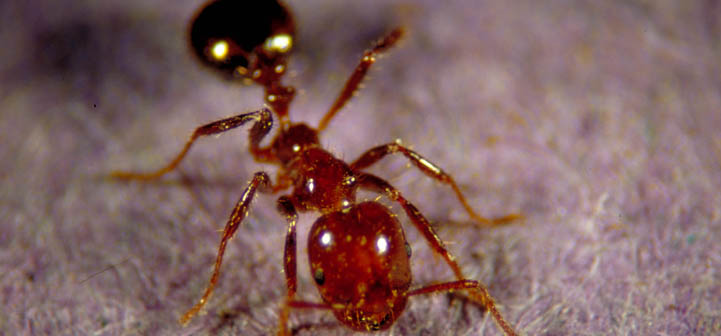An example of mating flight behavior in red imported fire ants
This photo animation, taken the day after a major fire ant mating flight in Houston, Texas, shows how winged fire ants can accumulate in swimming pools and other bodies of water.
In high humidity areas where the temperatures range from 70 to 95 degrees F, fire ant mating flights occur the first sunny day after a rainy period. Winged female and male reproductive ants, called alates, leave the mound, fly several hundred feet up in the air and mate in flight. The males die soon after, but the females go on to establish new fire ant colonies.
The female alates search for nesting sites and are often drawn to the shiny surface reflection of water as a landing place. The explanation for this attraction to water is that they are seeking riverside areas with high moisture and soft soil – ideal conditions for initiating new colonies. In the case of this motel swimming pool, some ants landed on the water, some sought refuge in the vacuum hose, but many were captured in the pool skimmer. Finding ants in a swimming pool can be an important signal that a new wave of fire ant colonies will soon establish mounds in the surrounding landscape.
The ants in the pool do not sting, but they do carry poison sacs that contain a toxin that is reportedly deadly to small fish if the ants are consumed. There is speculation that this is a cause of some fish kills in fisheries in central Texas.
Once the alates identify a suitable nesting site, they drop their wings (or pull them off), dig a burrow and start laying their eggs. They tend the eggs and the larvae that hatch from the eggs. They feed the larvae from their body food reserves (digesting wing muscles) and by cannibalizing some of their brood (eggs and larvae). After a month, or so, the larvae pupate and small worker ants emerge. The worker ants are responsible for building the new fire ant mound.
For More Information:

